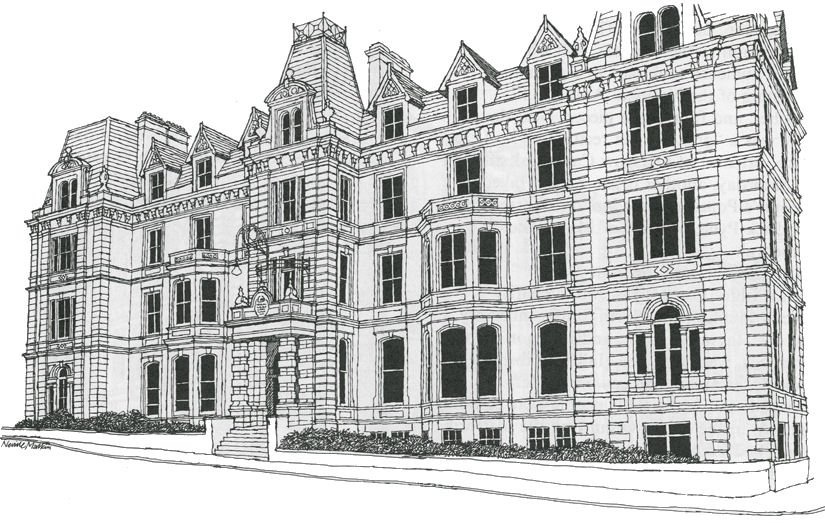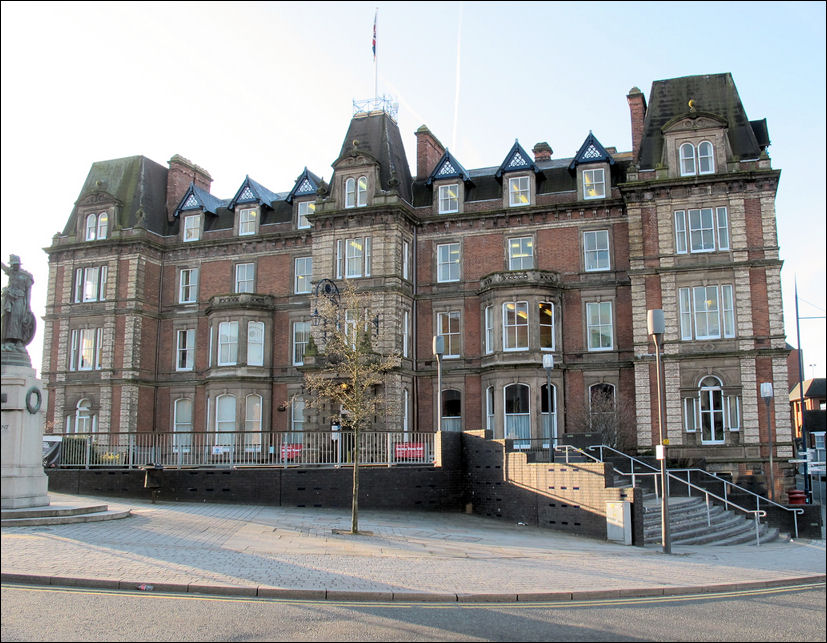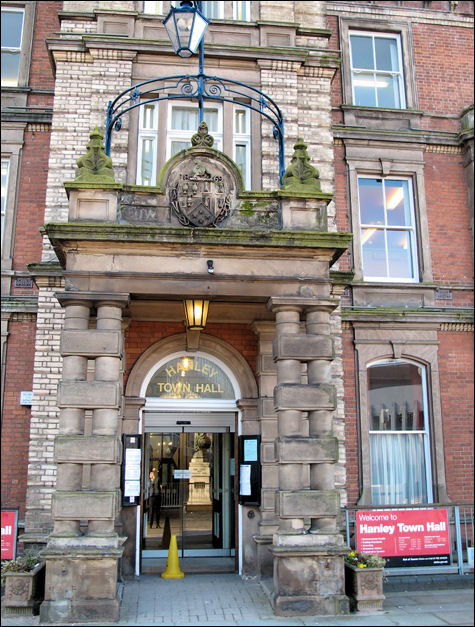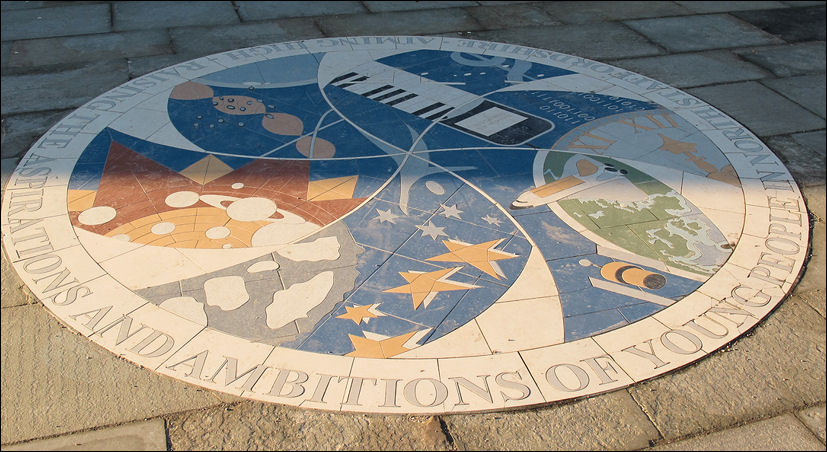|
|
|
![]() back to "The Grand Tour" index
back to "The Grand Tour" index
Neville Malkin's "Grand Tour" of the Potteries
buildings of Hanley
![]()
![]()
![]()
next: Victoria Hall, Hanley
previous: Public Baths, Hanley
contents: index of buildings in Hanley
|
No 70 - Hanley Town Hall
John Ridgway's crest of a kneeling dromedary was used in the Seal of the Borough of Hanley, and now forms part of the Coat of Arms of The City of Stoke-on- Trent. |

Hanley Town Hall, Albion
Street,
Hanley
pen drawing by Neville Malkin - July
1975
Former Town
Hall, now Municipal Offices and courts.
Originally designed as Queen's Hotel by Robert Scrivener in 1869, converted to a
town hall in 1884-1888.

Hanley Town Hall, Albion
Street,
Hanley
photo: April 2010
|
Red brick with white brick and ashlar dressings, slate roofs with 4 sets of tall brick stacks.3-storeyed with basement and attic, 9-bay front with projecting central and corner pavilions, these pavilions articulated with rusticated white brick pilasters. Ground, first, and second floor moulded bands, and bracketed entablature. Central doorway has projecting ashlar porch supported on coupled, rusticated columns with carved parapet and ornate iron lamp bracket. Either side are single sash windows, then canted bay windows, then a single further sash, and beyond, Palladian windows. Above a central tripartite sash window with either side a single sash, then a canted bay window with a further single sash, with beyond single tripartite sashes. Above a central tripartite sash flanked by 3 sashes with beyond a single tripartite sash. Above again, a central 2-light dormer topped by segmental pediment, flanked by 3 gabled dormers with beyond, single 2-light dormers topped by segmental pediments.
|
|
"Any architectural
value this large brick and stone building may have is far overshadowed
by its important role in the development of the City. It was built in
1869 by Robert Scrivener and originally opened as the Queen's Hotel,
but its commercial life was short-lived. In 1888 it was occupied by
the newly-formed and progressive-thinking County Borough of Hanley,
who took complete possession and changed its name to Town Hall.From
hotel to Town Hall must surely be a unique transition. In the same
year, Joseph Lobley, the Borough Surveyor for Hanley, built his
masterpiece, the Victoria Hall, directly behind the Town Hall.
What we now call Hanley was, in fact, the two separate townships of Hanley and Shelton until well into the 19th century; everything south of Stafford Street was in Shelton, and everything north in Hanley. The population growth of this township is quite remarkable. In 1738 it was only 1,000, but, by 1838, 18,249, making it the most important centre of the Potteries with approximately one-third of the total population. In 1857 Hanley and Shelton united to form the Potteries' first incorporated borough. The central position of Hanley and Shelton and their importance in relation to the rest of the Six Towns was recognised early; a decisive meeting was held at Hanley in December, 1817, attended by representatives from each of the Six Towns, with Sir John Edensor Heathcote in the chair, which adopted a resolution to hold all public meetings for general purposes at Hanley. Suitable accommodation to hold such meetings seems to have been a problem even then; until the Queen's Hotel was requisitioned in 1888, all previous business would have been conducted in the old Swan Inn, and later in the Old Town Hall, since demolished." |

Hanley Town Hall Entrance

Aiming High - Raising the Aspiratons and
Ambitions of Young People in North Staffordhire
![]()
![]()
![]()
next: Victoria Hall, Hanley
previous: Public Baths, Hanley
contents: index of buildings in Hanley
back to "The Grand Tour" index